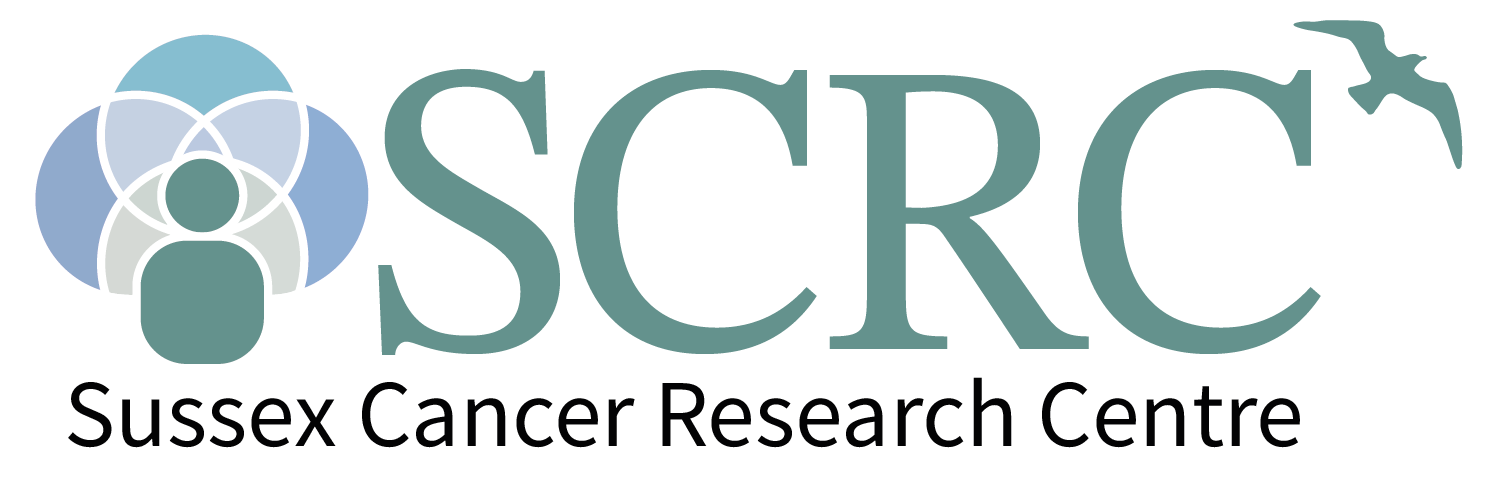
Thanks to the generous support of The Sussex Cancer Fund, The University of Brighton, Brighton and Sussex Medical School, and the University of Sussex, we have made five awards to kick-start exciting new collaborative research projects across Sussex. These diverse research projects span from bench to bedside and all share the potential to unlock new treatment approaches for multiple cancer types.
The SCRC sat down with Luke Yates to talk about his project.
SCRC: Can you share a brief overview of your project?
LY: Each of us carry a genetic blueprint in the form of DNA in every cell in our bodies. These instructions are often broken or damaged many times a day due to external exposure to radiation (e.g. UV), chemicals (e.g. smoking), or through cellular metabolism. Fortunately, we have evolved a sophisticated DNA repair system called the ‘DNA Damage Response’ to fix our genome when it is injured. The DNA damage response is crucial to prevent cancer initiation. In cancer, these repair systems do not work correctly or are hijacked to help a tumor develop and grow. In ovarian cancer, which is a lethal cancer for women, we believe the DNA repair system is overridden and repair avoided, and this helps the cancer resist chemotherapy. When the DNA repair ability is restored in ovarian cancer, they become more vulnerable to the chemotherapy usually given in the clinic. We want to initiate a project that aims to, (1) understand how this protein enzyme works in counteracting DNA repair and how ovarian cancers hijack this system; (2) find new drug-like molecules that block the protein to initiate the development of new treatments; and (3) explore whether this protein can be used as a biomarker in the clinic for precision medicine.
SCRC: What was the inspiration for your project?
LY: Understanding DNA repair defects in cancer has been an intense area of research over the last couple of decades and has led to a deeper understanding of cancer biology, driven genetic screening programs, and produced breakthrough treatments. These new therapies block DNA repair systems in specific cancers, killing the cancer but sparing healthy tissue. Whilst many are looking at targeting and blocking the repair machinery directly in cancer, we know little about how cancers actively turn off the repair machinery to avoid repair and evade treatment. Ovarian cancers are thought to have an actively suppressed DNA repair system, which helps drive the disease. However, researchers in the US found that a small subset (15%) of a common ovarian cancer subtype had a more active DNA repair system and this helped patients responded better to treatment and double their disease-free survival. This strongly suggests to us that restoring DNA repair system in ovarian cancer could be a strategy to tackle this disease.
SCRC: How do you foresee your project leading to patient benefit? And when?
LY: This is very early preclinical work. We do not fully understand how this target works at a molecular level and the development of new drugs takes many years. That said, unraveling how this protein operates in the cell’s DNA repair system will open new avenues of cancer research and may highlight other potential new targets for drug development. Investigating ovarian cancer and its ability to repair DNA may serve as a useful biomarker for how successful treatment will be in patients.
SCRC: If the project is successful—what’s next?
LY: If we confirm our hypothesis and develop an in-house screening program to look for new drug-like compounds, we will look for larger funding opportunities possibly in conjunction with leading pharmaceutical companies to try and advance our findings. The use of DNA repair as a biomarker may also open new avenues for more funding from large cancer charities.
SCRC: Can you describe any interdisciplinary aspects of your projects?
LY: We are aiming to combine techniques that allow us to move from thinking about and looking at atoms of molecules up to cancer cells and even the patient. At the molecular level we will use cryogenic electron microscopy, and/or X-ray crystallography to see individual molecules in atomic detail, use biochemistry for drug screening, and work with ovarian cancer cells to explore the effectiveness of this approach. To tackle this, the team consists of structural biology expertise (Dr Jasmeen Oberoi), drug discovery expertise (Prof. Erika Mancini) and medical oncology and clinical expertise (Dr Rebecca Herbertson). Together we will be able to think at different scales - from atoms to molecules and proteins, to cancer cells and patients, which I think is a powerful way to approach scientific discovery work.
SCRC: What do you think are the main challenges we face in cancer research? How does your project help to address this?
LY: In the context of ovarian cancers, in the UK less than half of women, and only 30% globally, survive more than 5 years after diagnosis. Acquired resistance to chemotherapy is a major problem. So, there is a clear need for new studies to open new avenues for rationally designed therapies to improve patient outcomes. This project, generously funded through SCRC, will allow us to begin hunting for new ways to treat ovarian cancer.
SCRC: How have research mentors benefited your research?
LY:
SCRC: If people want to follow you and your team or get updates as the project progresses, where can they get more info?
LY: Follow BlueSky social and my Sussex profile
Support life-changing research
Your support has an enormous impact on our research, transforming what we are able to do. Together we have the potential to transform the lives of cancer patients. With your support we are working to discover cutting-edge treatment approaches, that are both kinder and more effective.
We have parntered with the Sussex Cancer Fund to ensure your donations support life-changing research here in Sussex.
If you want to discuss your donation contact us.



